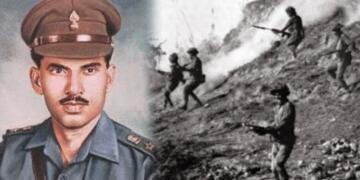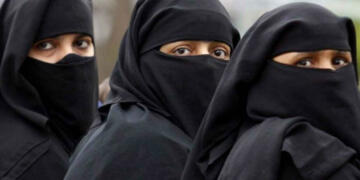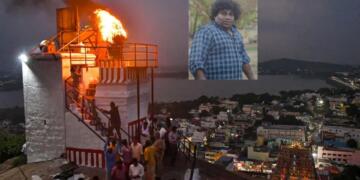The Supreme Court delivered a historic judgement as the Ram Janmabhoomi case was finally settled as the SC ordered to construct the much-awaited Ram Mandir at the disputed site. The SC also notified the Central government to set aside and build 5 acres of land in Ayodhya for a Mosque to be built. The Supreme Court relied on the finding of the Archaeological Survey of India to deliver the judgement and without the ASI’s report, the Supreme Court wouldn’t have ordered Ram Mandir to be constructed at the disputed area.
The ASI report was successfully able to establish that there was a grand temple below the Babri mosque.
There are 12 pillars in the mosque which the ASI found were made from temple remains. In almost all the temples of the 12th and 13th centuries, there is a ‘Purna Kalasha’ which has a structure of a ‘Ghada’ from which foliage would be coming out. It is the symbol of prosperity in Hinduism and is known as ‘Asht-Mangala Chinha’ – one of the eight auspicious symbols and although there were no Gods and Goddesses but ‘Asht-Mangala Chinhas’ were found in Babri mosque.
The ASI report also found a number of terracotta sculptures which further proved that the Babri mosque was built by demolishing a grand temple as in a mosque, there will never be a depiction of human beings or animals because it is forbidden in Islam. 263 pieces of terracotta depicting various Gods and Goddesses were also excavated. During the second excavation conducted in 2003, the ASI through the use of a ground-penetrating radar found that there were many structures below the ground as many anomalies were reported in the result. These anomalies meant that there are structures below the Babri Masjid. While the first excavation revealed 12 pillars that were made from temple remains, the second excavation exposed 50 pillars in 17 rows that were made from the remains of the temple. It means that the structure was imposing and large. The structure discovered was a temple below the Babri Mosque and dated back to the 12th century AD.
Makar Pranali is often seen in temples and has a great significance attached to it. In some temples before reaching the Sanctorum, one has to go through Makar Pranali which means that you are taking a symbolic bath in rivers Ganga, Yamuna and the underground Saraswati. After cleansing yourself of all the previous sins, you are going to the main God. The excavation of Makar Pranali from the mosque laid to rest the claims of a house being situated before the mosque. Even ‘amalka’ and many architectural members of ‘shikhara’ were also excavated.
The leftists led by Romila Thapar later went to discredit the ASI report by claiming the team had fabricated the findings. On the contrary, throughout the second excavation in 2003, court-appointed judicial members oversaw the excavation process. The excavation team consisted of several Muslims who were senior members of ASI. The team included Ghulam Khwaja who retired as director Arabic and Persian epigraphy at Nagpur and Atiqur Siddiqui who retired as a superintending archaeologist of Agra. The team also consisted of Zulfiqar Ali who currently is the superintending archaeologist of Chandigarh and all of them were not only a part of the excavation process but also co-authored the report. The ASI must be commended for its efforts to bring Lord Ram back to Ayodhya.





























